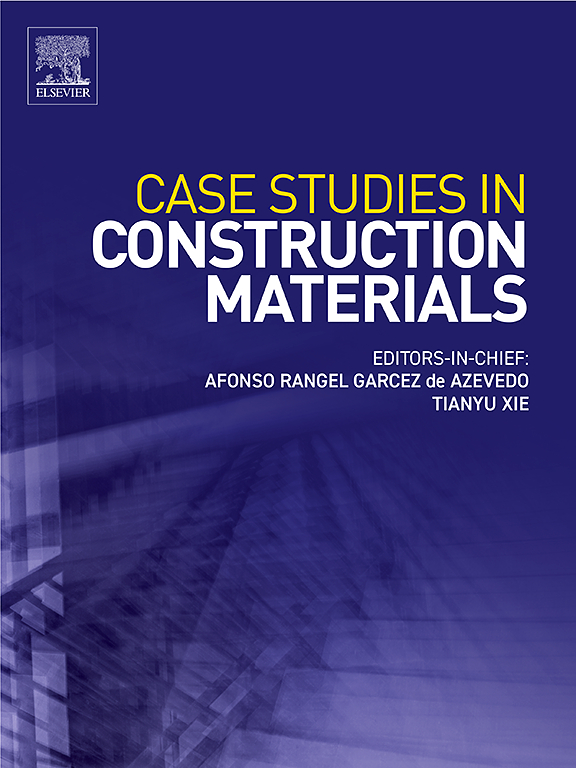Sustainable road construction materials incorporating dam sediment and eucalyptus ash waste: A circular economy framework
IF 6.5
2区 工程技术
Q1 CONSTRUCTION & BUILDING TECHNOLOGY
引用次数: 0
Abstract
This study explores the innovative use of dam sediments stabilized with eucalyptus wood ash (EA) and cement as sustainable materials for road construction, advancing waste utilization in infrastructure development. The novelty lies in the optimization of EA, a biomass waste with pozzolanic properties, as a stabilizer, providing a cost-effective and eco-friendly alternative to traditional methods. Destructive tests demonstrated that the optimal mixture containing 10 % EA and cement achieved an unconfined compressive strength of 7.7 MPa after 28 days, marking a 770 % improvement over untreated sediments. California bearing ratio tests yielded a peak value of 55 %, surpassing subbase material standards. Nondestructive tests using free-free resonance revealed strong correlations between compressive strength and wave velocities, with shear and compressional wave velocities reaching 600 and 990 m/s, respectively. Microstructural analyses showed significant formation of calcium silicate hydrate, with a 30 % increase in content, enhancing interparticle bonding and sediment densification. This study also introduces a novel framework for cost analysis, revealing a 6.6-fold reduction in construction costs due to the local availability of stabilized sediments. Furthermore, leaching tests confirmed the environmental safety of the materials, highlighting their potential as a green and economically viable solution for road construction. These findings underscore the innovative integration of waste materials into high-performance construction applications, advancing the principles of circular economy and sustainability.
包含水坝沉积物和桉树灰废料的可持续道路建筑材料:循环经济框架
本研究探索了桉树木灰(EA)和水泥稳定的大坝沉积物作为道路建设的可持续材料的创新使用,促进了基础设施建设中的废物利用。其新颖之处在于对EA(一种具有火山灰性质的生物质废物)作为稳定剂的优化,为传统方法提供了一种经济高效且环保的替代方案。破坏性试验表明,含有10 % EA和水泥的最佳混合物在28天后的无侧限抗压强度为7.7 MPa,比未经处理的沉积物提高了770 %。加州承载比测试的峰值为55 %,超过了底基材料标准。利用自由-自由共振进行的无损检测表明,抗压强度与波速之间存在很强的相关性,横波和纵波速度分别达到600和990 m/s。微观结构分析表明,水合硅酸钙的形成显著,含量增加了30 %,增强了颗粒间的结合和沉积物的致密化。该研究还引入了一种新的成本分析框架,揭示了由于当地稳定沉积物的可用性,建筑成本降低了6.6倍。此外,浸出试验证实了这些材料的环境安全性,突出了它们作为绿色和经济上可行的道路建设解决方案的潜力。这些发现强调了将废物材料创新地整合到高性能建筑应用中,推进了循环经济和可持续性原则。
本文章由计算机程序翻译,如有差异,请以英文原文为准。
求助全文
约1分钟内获得全文
求助全文
来源期刊

Case Studies in Construction Materials
Multiple-
CiteScore
7.60
自引率
19.40%
发文量
842
审稿时长
63 days
期刊介绍:
Case Studies in Construction Materials provides a forum for the rapid publication of short, structured Case Studies on construction materials. In addition, the journal also publishes related Short Communications, Full length research article and Comprehensive review papers (by invitation).
The journal will provide an essential compendium of case studies for practicing engineers, designers, researchers and other practitioners who are interested in all aspects construction materials. The journal will publish new and novel case studies, but will also provide a forum for the publication of high quality descriptions of classic construction material problems and solutions.
 求助内容:
求助内容: 应助结果提醒方式:
应助结果提醒方式:


